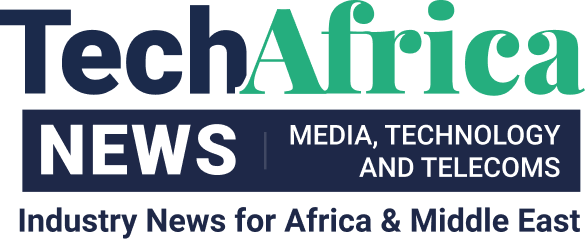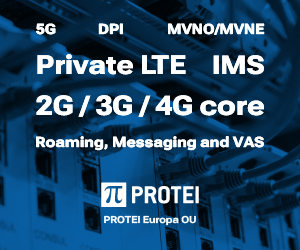For many years, Africa’s mobile internet economy has been regarded as one of the largest, yet most overlooked, investment opportunities. According to the African Development Bank, the mobile telecoms space in Africa is the fastest growing market in the world, with eight out of 10 Africans having a mobile phone – a demographic with huge spending power.
In fact, the State of Industry Report on Mobile Money 2023 cited that the value of mobile transactions in 2022 hit $1.26trillion, while transactions in Africa alone were valued at $836.5billion, about two-thirds of the global value.
Despite its foremost position within the mobile connectivity market, 78 percent of the Sub-Saharan population are still not connected to the internet.
While steps are being taken to re-address the growing digital divide and drive forward digital investment, the question still remains: How do we narrow the digital divide and open opportunities for a rapidly growing population?
At ST Engineering iDirect, we believe that the right technology can open doors. We’re seeing this first-hand now with our work alongside the National Institute of Radio and Television in Peru where, just recently, our SKYflow eco-system – a platform which will give 100% of Peruvians access to media content at home – officially launched.
Craig Bowley, Regional Vice President, EMEA at ST Engineering iDirect
Solutions like SKYflow can help to connect the unconnected and open their eyes to the educational, entertainment and telemedicine benefits that help developing countries, like Peru, and continents like Africa, move forward.

State of connectivity
The Democratic Republic of Congo (DRC) is the largest country in sub-Saharan Africa.
The region benefits from exceptional natural resources, hydropower potential, significant arable land and immense biodiversity, thanks to it being home to the world’s second-largest rainforest.
While these qualities might suggest a prosperous landscape, a large portion of the DRC population have yet to reap the rewards of this wealth.
Historically, the region has been subject to political upheaval, leading to conflict, resulting in a lack of infrastructure.
Although attempts have been made, over the last decade, to rebuild destroyed infrastructure, lengthy delays to reconstruction plans, due to affordability and ongoing instability, have left many without vital amenities like schools, health centres and connectivity.
Connectivity plays a vital role in our day-to-day lives. As a consumer myself, I know this to be true. In fact, many have described it as the ‘cornerstone to economic growth’. In spite of this global mindset, there are still places on Earth where the internet is out of reach. For tens of millions.
It is not only conflict and political unrest that can lead to slow development in countries around the world.
Economic crisis, affordability, safety and security are also some of the primary barriers many territories face with regards to internet adoption. There’s also geography. Countries like Peru, for example, thanks to its mountainous landscape, hard-to-reach locations and inclement weather, are naturally restricted when it comes to connectivity.
Peru is known for being the country with the highest price for internet use in Latin America, where just 60 percent of its 30 million citizens has access to the internet. Making access to it, where it is available, even more challenging.
The DRC itself is facing its own challenges, the significant slow-down in its expansion of its broadband internet connections, its progress in mobile connectivity, which is far behind almost all other countries in the sub-Saharan and, much like Peru, its high costs of connectivity.
Forecasts by the GSMA though, predict that by 2025, 67 percent of the population will have access to 3G, and 50 per cent will have 4G access – marginal improvements, of course, but there are still glimmers of hope for a more connected future.
Despite its position as one of the poorest countries in the world, the DRC has shown undeniable enthusiasm in developing its digital status. In September 2019, the DRC adopted a new vision for the digital economy, captured in the Plan National due Numerique (PNN).
As part of this, its educational authorities are aware that digital skills are a critical component of levelling-up its digital status. But, one of the most significant challenges to this problem, is that the minority with connectivity simply have little knowledge of how to use it.

Educating the unconnected
Across the sub-Saharan, 60 percent of the adult population are not connected to the internet, but it is the younger generation – the future of the DRC – that are suffering the most.
In the two most conflict-affected provinces of the DRC, UNICEF suggests that the education of around 750,000 children has been disrupted. The scale of the ongoing crisis has meant that the majority of children living in displacement camps are not able to attend school at all, resulting in alarming statistics.
Nearly 7 million children are out of school, 8 percent of young people are said to be unemployed and almost 99 families out of 100 are not connected to the internet at home in the DRC.
While the Covid-19 pandemic affected remote learning across the world, leading to millions of children learning from home, much of the DRC’s population were blind to its benefits. According to the GSMA, just 11 percent of households own a computer and less than one third has broadband coverage, meaning that learning at home – before, during and since the pandemic – has been virtually impossible for the tens of millions without it.
The same issue is faced by Peruvian residents, many of whom – before our involvement – had little to no access to educational, telemedicine or financial resources, leaving a large portion of its residents without the basic connectivity that would enable them to level-up their digital skills, understand health concerns, access financial data or stay-up-to-date with the latest global news.

Levelling up
In a bid to level up the DRC’s digital offering, The Boston Consulting Group (The BCG) report estimates that 650 million workers must be trained, or retrained, in digital skills by 2030, in order to meet demand for digital services across the continent.
As the digital economy develops, as outlined in the PNN report from 2019, the demand for digital skills will, inevitably, continue to rise. But, there are a number of organisations playing their part in the development of the DRC, including us.
Thanks to its tropical climate and vast geography, low population density and extensive forestland, the installation of new networks – to fix those damaged due to conflict – is no easy feat.
As part of our work in the DRC, the ST Engineering iDirect team have been working to help reconnect its population, in an effort to help them level-up the economy.
Vodacom, the most established mobile network operator in the country, chose us – alongside partner Gilat Telecom – to install and commission two Dialog hubs to power cellular backhaul services across the region. During the early stages of our partnership, internet penetration rates sat at approximately 3 percent, with the DRC still developing its 4G and 3G networks.
Although the project was pushed back due to the pandemic, the network is currently used primarily for cellular backhaul services, for applications like social media, video sharing and conferencing platforms, as well as data transfer applications.
Access to these applications has already had a significant impact on remote communities like the DRC – of which 60 percent of the population currently lives within. Access has opened up opportunities for residents to connect with family and friends, market their businesses, access services and stay up-to-date with the latest local and global news.
Added to this, the new hubs have enabled Vodacom to quickly deploy a 3G network across the 150 BTS (Base Transceiver Station) sites and the Base Station Controller, located in Kinshasa, meaning that DRC residents no longer need to rely on 2G network connectivity alone.
Beyond our work, UNICEF recently launched a ground-breaking Generation Unlimited initiative, alongside Kinshasa Digital Academy, in a bid to train 10 million youths by 2023. There’s also a collaborative scheme just unveiled between Enabel, Kadea Academy, Vodacom and Silikin Village seeking to encourage 1,000 young people across the DRC into digital professions by enhancing digital skills – particularly those of the female population, who – above all – are said to be missing the vital skills required to benefit from connectivity most.

Connectivity for all
Much like the DRC, plans have been laid out to develop Peru’s own digital economy, with the aim of first improving access to the internet in both rural and urban areas, and also its population’s understanding of its benefits.
Though technological advancements have been made in the country over the years, its Government still faces challenges with expanding access in areas with lower population density.
Earlier this year, we partnered with the National Institute of Radio and Television (IRTP), alongside our partner, DIVICAM, to deploy the SKYflow ecosystem to deliver DTH (direct-to-home) services to remote regions of Peru – of which almost 22 percentreside in.
The solution has officially been deployed across Peru, allowing residents to access public content, including educational resources and telemedicine, that had previously been unavailable to them. While education is a huge priority for the country, so too is telemedicine.
Because of its dynamic landscape, inaccessible roads and mountains, health conditions of Peru’s population differs vastly across the country because of access challenges, leading to large portions of its residents having little to no access to healthcare.
In response to the pandemic, and the demand for remote, quick and accessible healthcare, various telemedicine systems have since been launched. However, their rapid roll-out – “without a proper and sufficient internet system nationwide” – meant that only a small number of residents have been able to benefit from its services.
SKYflow is a collaboration between partners, EKT, EasyBroadcast, Quadrille, EZDRM and us, ST Engineering iDirect. The DVB native IP over satellite ecosystem offers cost-effective, ultra-fast, low-latency delivery of live and on-demand video to mobile devices and large screens alike for global audiences.
This is particularly significant for the distribution of content in a multi-screen environment to households that may not have internet access but have access to a television, tablet or smart device. SKYflow is capable of providing two-way broadcasting, which would expand the use cases available to the Peruvian government in the future, allowing it to benefit from the unique attributes that satellite brings to the delivery of OTT services.
Currently, the government reaches a mere 70 percent of homes with their TV channels. Thanks to this solution, the remainder of the Peruvian population is set to receive DTH content and have access to live TV that can be recorded, enabling the government to attain its goal of reaching every household in the country.
Although as a result of conflict, the DRC faces many of the same challenges that Peru does. We’ve seen just how this technology has already impacted the lives of Peruvians, many of whom require connectivity to improve healthcare services, as well as all-important – and unrestricted – educational resources.
The future of connectivity
There’s little doubt that satellite is vital to achieving ubiquity of connectivity – particularly in remote locations like Peru and the DRC, both of whom face barriers to connectivity because of natural landscape, affordability and conflict.
Satellite’s capabilities are unmatched in remote areas, but we know it’s not the full story. Satellite is part of a wider ecosystem that comprises different types of connectivity. In order to make connectivity affordable and accessible to all, this ecosystem must be optimised. 5G will play a fundamental role as the enabler; offering the ability to provide the right type of connectivity for application, in spite of location, at a reasonable cost. But, right now, the cost for 5G roll-outs are simply too high.
As I’ve demonstrated throughout this piece, there can be no ‘one-size-fits-all’ solution. Each country, and its requirements, are vastly different. As are their challenges. Moving forward, I believe we’ll be looking for a hybrid, or ‘blended’ solution, that offers the best service based on its location. Whether this is cellular, satellite, or another technology.
We’re always on the look-out for solutions that provide four fundamentals – flexibility, scalability, affordability and efficiency. Three factors that must be in play in order to achieve delivery of service, that doesn’t compromise speed, efficiency, scale or cost. Our Mx-DMA MRC (multi-resolution coding) technology has become our most popular package to the African region; customers that need all four in order to meet their ambitious objectives of levelling-up their digital economy.
Looking ahead
Digital transformation, across the world, is at the forefront of our minds. The capabilities it unlocks, from education, healthcare, entertainment and security, are hugely significant and cannot be underestimated.
It’s encouraging to see so many countries turning their attention to the benefits it brings, and planning how they can leverage it to open up opportunities for socio-economic development. But, without fundamental access, populations – like those in the DRC – will never fully realise its potential.
Governments, commercial companies and telecoms specialists in the ecosystem, however, are working to change this, all with the support of schools, workplaces and organisations, helping to fuel the missing digital skills from a formative age.
We’re doing our best to support the evolution of the ecosystem, through innovation and optimisation. But we can learn so much from our existing case studies, in particular our ongoing work with the DRC and the National Institute of Radio and Technology (IRTP) in Peru, both of which demonstrate the power of connectivity.










